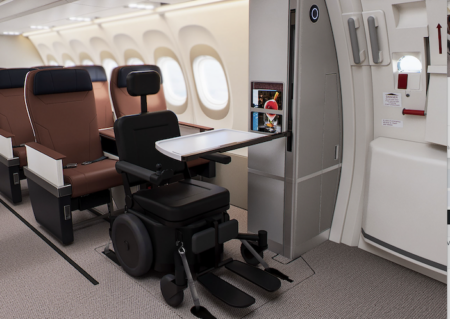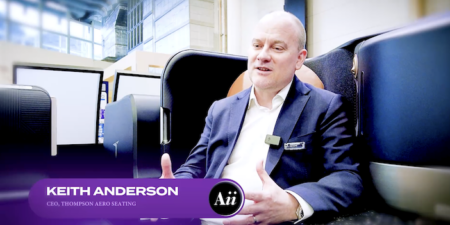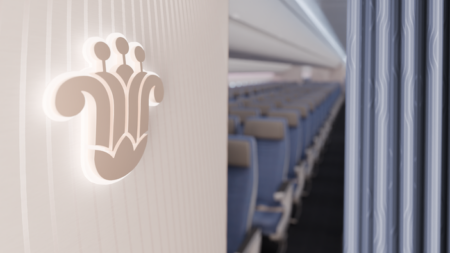December 10, 2015 – Many passenger experience industry observers have commented that while aircraft seating innovations in business and first class generally enhance comfort, work in the economy class arena tends to focus on minimizing seat pitch in ways that passengers will tolerate.
However, during a 14-hour flight in economy class from Japan to the UK, a London-based industrial designer had time to think about how his comfort levels could be improved, and devised the Twister concept.
The seat in which the creator – Adam White, joint creative director of Factorydesign – was sitting was a conventional long-haul economy class design, with a simple hinge mechanism giving the option of around 5in of seat recline. The basic premise is simple, tried and tested, and has been put to use by airlines the world over for decades.
However, his proposed Twister seat is rather different in that it mimics the human spine, in recognition that humans twist their bodies to get comfortable, rather than folding like a hinge. The patented design comprises a vertical ‘backbone’ with ‘ribs’ along its length and along the seat pan. As the occupant’s weight shifts, so do the ribs, to maintain a shape that is comfortable and ergonomically sound.
“From your shoulders to your thighs, the seat follows your profile as you move,” explained White.
Above: The ‘ribs’ at work in the prototype seat
A passenger in a Twister seat could lean in one direction or curl up in another, and once the desired position is found, they can simply press a control button to hold the seat in that position. With another press of the control button, the seat would return to the neutral TTOL position.
According to Factorydesign, because the Twister seat distributes body weight more evenly than conventional economy class seats, it helps avoid deep vein thrombosis – a point becoming increasingly important as aircraft technology enables longer flights, such as Emirates’ 17-hour flights from Dubai to Panama City and Singapore Airlines’ forthcoming 19-hour route from Singapore to New York. “You wouldn’t get a pressure point under the thigh, which would be a significant health benefit,” stated White.
Above: Adam White (right) evaluating a prototype for comfort in Factorydesign’s London studio
While the concept is intended to enhance passenger comfort, the critical aspect for airlines is that the studio says the Twister would take up the same amount of room as a standard economy class seat, and operate in the same envelope.
“We see this as a long-haul product. This is all about duration seating,” stated White. “There has been considerable debate about economy class seating in the media, and many concepts which don’t actually seem to have considered the needs of the passenger. This design is completely centered around improving the passenger journey experience.”




